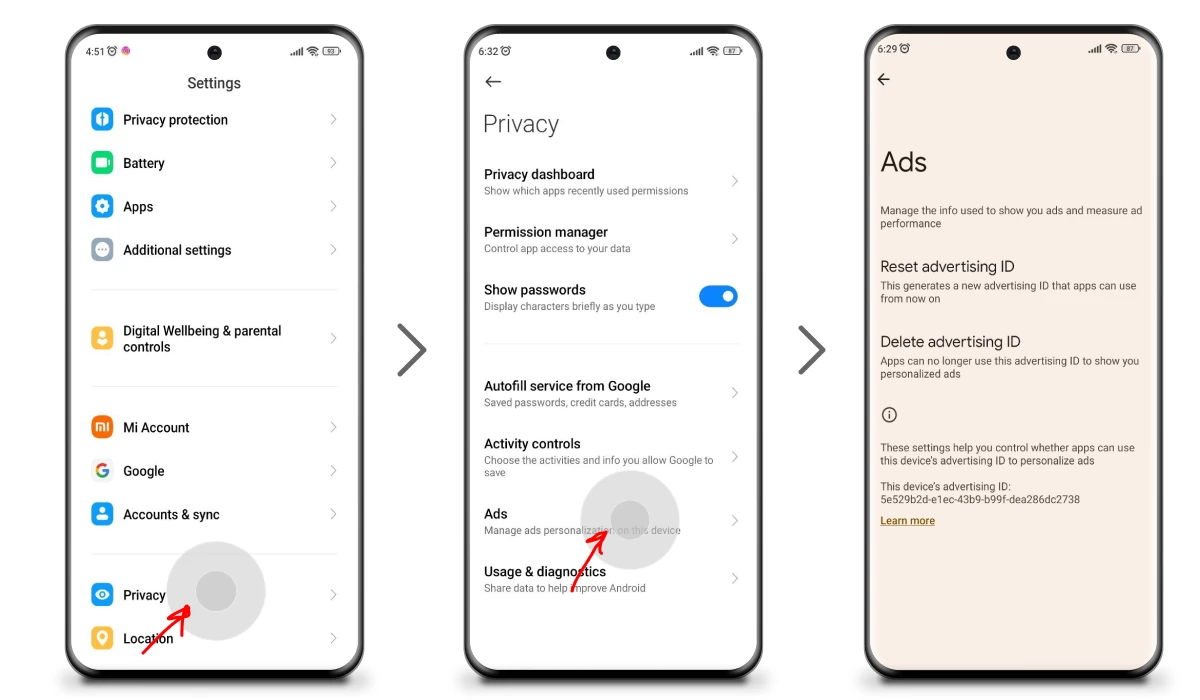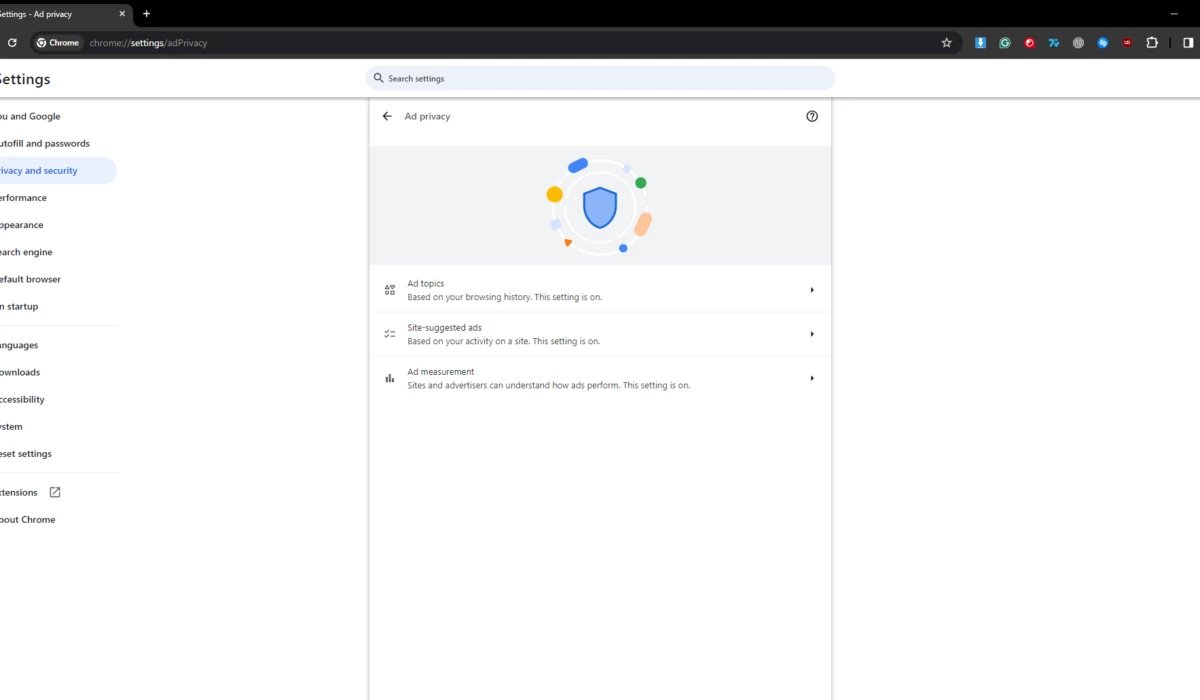How To Stop Google Ads Once and for All
Let’s be honest: Google ads are everywhere. You open Chrome to read the news or scroll through Google Discover, and your screen fills up with “recommended” gadgets, questionable apps, and clickbait headlines.
If you’re wondering how to get rid of Google ads, remove sponsored ads on Google, and stop Google ads on Android or iPhone once and for all, this guide is for you.
We’ll break down step-by-step fixes, show you how to turn off Google ads across your devices, and explain why a good ad blocker is still the easiest way to reclaim your screen.
Key points:
- Recent changes in Google’s personalized ads for desktop browsers, mobile browsers, and apps, along with strategies to manage them.
- How to block specific Google ads on Chrome and Mozilla Firefox.
- Tips and techniques to prevent ad tracking on Android and iOS devices.
- Understanding the different types of Google advertising for a closer look at your adversaries..
- What Types of Google Ads Are You Seeing?
- How to Stop Google Ads on Android
- How to Stop Google Ads in Chrome
- How to Block Google Ads on iPhone
- How to Stop Ads in Google Play Store and Google Apps
- How to Remove Google Ads Manually
- The Best Way to Get Rid of Google Ads: Use AdLock
- Comparative table: Top Google Ad Blockers
- Conclusion
- FAQ: Blocking Google Ads
What Types of Google Ads Are You Seeing?
Google’s ad empire follows you across every app and site. Here are the main culprits:
- Search ads (the ones topping every Google query)
- YouTube video ads (pre-rolls, mid-rolls)
- Display ads in Chrome and other browsers
- Gmail “Promotions” and sponsored emails
- Ads in Google Play, the News app, and Discover feed
- Personalized recommendations in Google services
These ads are designed to feel “relevant,” but often they’re just plain annoying.
How to Stop Google Ads on Android
Google’s tracking on Android is especially aggressive because your device ID and app activity get linked to your Google account.

To remove Google ads and reduce personalization:
- Open Settings > Privacy > Ads
- Tap Delete Advertising ID or Reset Advertising ID
- This won’t block ads entirely, but they’ll stop being so targeted.
- Disable ad personalization:
- Open Settings > Google > Ads
- Turn on Opt out of Ads Personalization
- Clean up suspicious apps:
- Open Google Play Store
- Tap Profile > Manage apps & device > Manage
- Sort by Recently updated
- Uninstall any apps you don’t trust (some inject pop-ups)
- Use AdLock for Android:
- Download from adlock.com/get-adlock
- Install and follow setup instructions
- Enable HTTPS filtering to block Google ads on Android system-wide
With these steps, you can stop ads from Play Store, Chrome, and inside many apps.
How to Stop Google Ads in Chrome
Even if you tweak privacy settings, Chrome still displays plenty of sponsored ads. Here’s how to block ads in Google Chrome:
- In Chrome, go to:
- chrome://settings/adPrivacy
- Disable:
- Ad Topics
- Site-suggested Ads
- Ad Measurement
- Block pop-ups:
- Settings > Privacy & Security > Site Settings > Pop-ups and redirects → Block
- Block intrusive ads:
- Settings > Privacy & Security > Site Settings > Additional content settings > Ads
- Turn on Block ads on sites with intrusive ads
- For full protection, install AdLock:
- Download the extension or desktop app from adlock.com/get-adlock
Enable filters to remove ads from Google feed, Search, Gmail, and


How to Block Google Ads on iPhone
Apple doesn’t allow system-wide blockers, but you can still block Google ads on iPhone in Safari:
Step 1: Reduce tracking
- Settings > Safari
- Enable Prevent Cross-site Tracking
- Enable Block Pop-ups
- Settings > Privacy > Tracking
- Turn off Allow Apps to Request to Track
Step 2: Use AdLock for Safari
- Install AdLock from the App Store
- Open Settings > Safari > Extensions
- Enable AdLock toggles
Step 3: Block ads in apps
- Install AdLock for iOS
- Choose a subscription plan
- Enable system protection
This helps remove Google ads across apps and the browser.
How to Stop Ads in Google Play Store and Google Apps
One of the most common frustrations is sponsored content and banners in Play Store, Discover, and the News app.
To reduce or stop Google Play ads:
- In Google Play Store:
- Tap Profile > Settings > General > Personalization
- Disable Personalized recommendations
- In Google News:
- Tap Profile > Settings
- Turn off Personalized Stories
- Use AdLock to block ads in Google News app and Discover feed:
- Install from adlock.com/get-adlock
- Enable HTTPS filtering
With these steps, you’ll see far fewer recommendations and in-app banners.
How to Remove Google Ads Manually
If you just want to remove sponsored ads on Google in a few places:
In Search:
- Click the three dots next to the ad
- Tap Block ad
On YouTube:
- Click ⋮ > Block ad
In Gmail:
- Open the ad email
- Tap ⋮ > Block ad
Manual blocking helps, but it won’t eliminate everything.
It’s become a bit more challenging to opt out of certain commercials, but it’s still possible to block ads on Google. Additionally, we’ve created a comprehensive guide on how to turn off ads in Gmail.
The Best Way to Get Rid of Google Ads: Use AdLock
All the settings above help, but they don’t cover every app or site. AdLock does:
Blocks Google ads in Chrome, Safari, Firefox
Removes pop-ups, video ads, banners
Blocks in-app ads on Android
Stops tracking scripts and spyware
How to install AdLock:
- Download for Android, iOS, Windows, or macOS from here
- Install and activate
- Enable filtering
- Enjoy ad-free Google browsing
Comparative table: Top Google Ad Blockers
| Feature | AdLock | uBlock Origin | AdBlock Plus | Ghostery | Privacy Badger |
| Ad-blocking Efficiency | ⭐⭐⭐⭐⭐ | ⭐⭐⭐⭐ | ⭐⭐⭐⭐ | ⭐⭐⭐ | ⭐⭐⭐ |
| Blocks Video Ads | Yes | Yes | Limited | Limited | No |
| System-wide Ad-blocking | Yes | No | No | No | No |
| Customizable Filters | Extensive | Extensive | Moderate | Moderate | Limited |
| Privacy Protection | Comprehensive | Moderate | Moderate | High | High |
| Ease of Use | Very Easy | Moderate | Very Easy | Easy | Easy |
| Platforms | All | Browser-only | Browser-only | Browser-only | Browser-only |
| Price | Paid | Free | Free | Free | Free |
Conclusion
Google ads are built into nearly everything you use. But that doesn’t mean you have to accept them. Whether you want to stop ads from Play Store, remove ads from Google feed, or block Google ads on iPhone, you have options.
You can spend hours tweaking settings — or install AdLock and be done in minutes.
Try it risk-free today. Your sanity will thank you.
FAQ: Blocking Google Ads
Can I stop Google ads completely?
Almost. AdLock blocks 99% of them across apps and browsers.
How do I stop Google Play ads?
Disable personalized recommendations in Play Store settings and use AdLock for system-wide ad blocking.
Does AdLock block ads in the Google News app?
Yes, it can block ads in Google News app and Discover feed.
How do I block Google ads on Android?
Reset your advertising ID, disable personalization, uninstall suspicious apps, and install AdLock.
How do I block Google ads on iPhone?
Use Safari settings to limit tracking and install AdLock for browser and in-app protection.
Will an ad blocker affect site functionality?
Sometimes sites ask you to whitelist them, but you stay in control.
Is it legal to remove Google ads?
Yes. You’re free to control what loads on your devices.